
Eita who plays Okubo Toshimichi in the big drama "Saigo Don" that appeared in the photo session
NHK Taiga Drama Special Exhibition "Saigo Don" is held at the Tokyo University of the Arts University Art Museum during the period from Saturday, May 26th to July 16th (Monday, congratulation). We interviewed the exhibition held on May 25, so we will introduce the contents of this exhibition.
Takamori Saigo (1827-77) who raised herself from lower samurai of Satsuma (Kagoshima) and accomplished the Meiji Restoration. However, he does not have any portrait photographs, and his life is enveloped in many mysteries. This exhibition, in conjunction with the river drama, highlights the era of "People of Saigo Den" and the era of turbulence, by historical materials of Saigo Yukari and other art objects.

Introduction
· Prologue Saigo and Satsuma
Takamori Saigo lived in Kagiya – machi under the castle in Kagoshima in the tenth year of government. In the prologue, a picture showing the townscape of Kagoshima, landscape paintings of Sakurajima, materials such as sticks used by Sogojima's learned "Noda self-watching" were exhibited, and knowing the environment Saigo grew up I can do it.

"Portrait of Saigo Takamori" Ishikawa Shizumasa Initial Oil on the Taisho Era, Canvas One Personal Collection
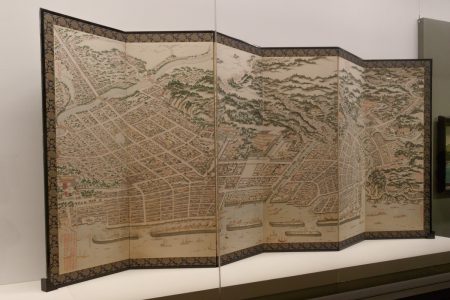
"Kagoshima Castle Pictorial Painting Screen (Sample)" Tenpo Year (1830 – 44) Paper Book Coloring One Six Kagoshima Prefecture Historical Data Center Dawei Kuri Jury Tamasato Tsuya Data Exhibition Period: 5/26 – 6/17
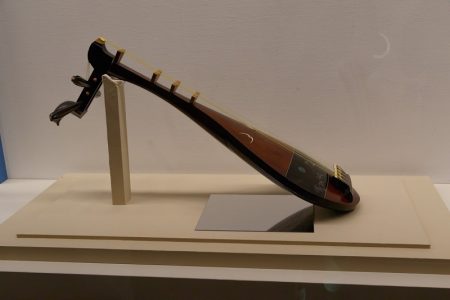
"Satsumada biwa inscription" Takahiro Takahiro wooden, lacquer coat one store private
It is said that while Saishu and Meiji celebrities left many portrait photographs, there are no photos of Saigo left. Still, we can think of that figure as "Saigo" because the image by the portrait spread. Painters such as Edoardo Kyosone, Sato Hitoshi (Sato Hitoshi), and Tokiwakamakuma (Tokiwakakima) painted Saigo based on the bereaved photos and testimonies. Also, Ishikawa Shizumasa (Shizuma Ishikawa) did not have a picture in painting, but he was acquainted with Saigo and drew up the image of Saigo based on his memories.
· Chapter 1 Sacking
The arrival of Perry in the 6th year of Yoshinaga (1853) brought about a big change in the life of Saigo. In the Satsuma clan where Shimazu Norikira (Shimazu Akira) had become a lord as a response to the arrival of a foreign ship early on, the modernization was promoted, Saigo expanded the place of activity to the front stage of politics I will continue. In this chapter, we will look at the days when we are about to arrive at the end of the Edo period, such as the large armor that shows the majesty of Qiaora, the letter addressed to Katsu Seibu (and Kaijuu) from Qiao Liu, and the time when Saigo was ordered to work in Edo I will chase.
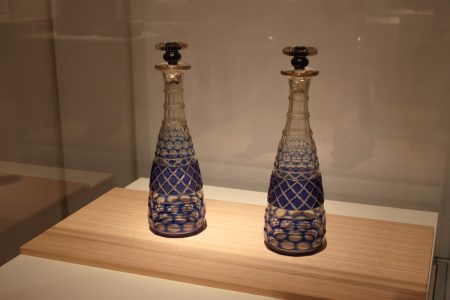
"Temple clay dentist Satsuma cho" Indigo drink bottle "Edo period 19th century cut glass pair Public interest Foundation Deokawa Memorial Foundation

"Purple weapon for Shuri Shimazu Qi Rabbit site" Collection in the Edo era Kyoto National Museum

"Wood gun" Edo era 19th century wooden Ichigo Kyoto · Lishan Historical Museum Collection
Extremely simple cannons are on exhibition. This is a wooden artillery made instantly by the shogunate ordered each clan to protect the coast when Perry came and was shortage of artillery. It is one of the few wood guns left unused.
· Chapter 2 Rotation
"Ansei no hell" by Ansei Five Year (1858), Nao Ii (Good Rikuke) was started. Saigo will not be able to protect the moonlight from the pursuit of the shogunate, but will try to kill the moonlight and enter the water, but I will breathe out and breathe in Amami Oshima. Saigo is recalled from Amami Oshima at the second year of Bunkyu (1862), but then as a remark "I am inciting a religious faction", Tomojima to Tokunoshima followed by a remote island order to Okinoerabujima will go down. In the second chapter, we will examine materials related to the life of Saigo, which changed greatly with the political situation which is confusing due to the Hyeowang 攘 運動 movement.

"Otsumi Seiji Ei Inundation" Matsuki Seijin Monogatari Meiji 11 (1878) Nishikigee Three pieces continued Kyoto · Lishan Historical Museum Collection
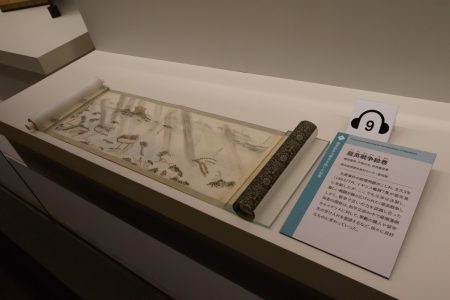
"Satsumi war picture scroll" Ryuzu Yanagida, Shirayoshi Nakajima, Arima Yuriko Paper Book This booklet Akira Ichiban (out of the four volumes) Kagoshima Prefecture Historical Information Center Reimu Collection
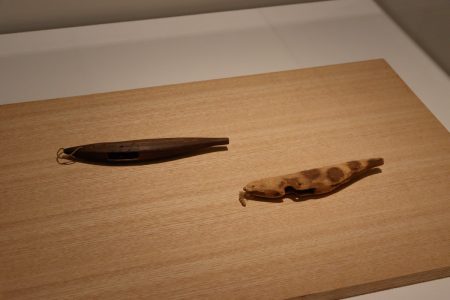
Pseudo-bait transmitted that Saigo made his own work at Okinoerabujima "Satsuma cypria bait tree" End of the Edo period – two Meishi two wooden plants Yamagata Konchuin
· Chapter 3 Flight
The former first year of Motoshōji (1864), Saigo was called out to Kagoshima from Okinoerabujima, as its competence was sought. Saigo succeeded in repelling the Choshu army in the "change of the gates", but when the shogunate suggested again the attack on Choshu, Saigo decided to break with the shogunate. By the mediation of Sakamoto Ryoma, the Satsuko Alliance was established and the way to the arming force was opened. In this chapter, the end of one era will be indicated by exhibits such as copies of the Satsuma Alliance memorandum, the imitation of the submission, war paintings of the Ueno war.

Things that Saigo got from Shimazu Hisamitsu and Tadayoshi due to the discourse of change of the gates "Saigo Ryori Juniorori (Reproduction)" Tang Dynasty, Tang Jin Il Temple Kagoshima Prefecture Historical Center of History Liberation Hall
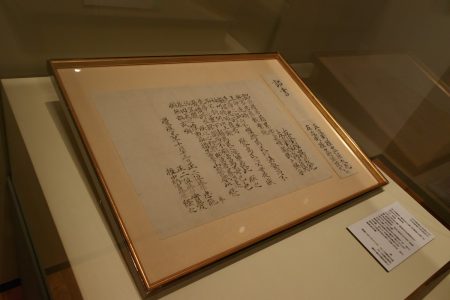
"Imperial Court's Secret" Keio 3 Year (1867) October 13 paper style book Ichigo Kagoshima Prefecture History Center Center Rearing Building Kojimari Tsuya Material * Later term (6/19 – July 16)

Flag of Nishiki of Iwakura dedicated to dedication "Nishiki Flag" Keio 4th (1868) Futoshi Kuko Fukushima / Shinshan Shrine
· Chapter 4 Heroes
With the wishes of Okubo Toshimichu who became a member of the new government, Saigo decides to enter the government. After that, when confronted with Okubo and others about diplomatic problems with Korea, Saigo returned to Kagoshima, engaged in hunting and agriculture. However, when the rebellion of the samurai who caused dissatisfaction with the new government came about in the whole country, Saigo will eventually go to the final battle of the lifetime "Southwest War". In this chapter, together with their possessions living in the new era, such as Saber that Saogo wore and Okubo owned, we will examine the materials of the Southwest War and follow until the end of their lifetime.
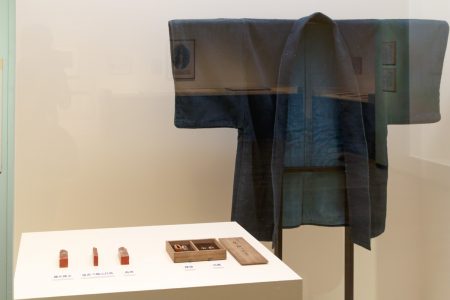
(Right) "Saigo Takamori wearing hunting feather" Meiji Era Initial one point private warehouse (middle) "Saigo Takamori duty sword orthosis (limp head, conscious)" Chikuyama eymoto Shosaku 3 rd year (1820) golden set personal custody ) "Saigo Takamori Seal" In the Meiji Era Initial Wax Stone Three Points Kagoshima Prefecture Historical Data Center Preserved Dawei Kan
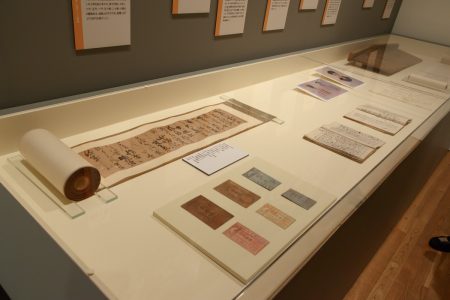
Martial Arm issued by Saigo Army to compensate for shortage of military capital (bottom) "Saigo Tag" Meiji 10 (1877) June Fabric, a set of lacquer Kagoshima Prefecture Historical Data Center Preserved Dawei Kan
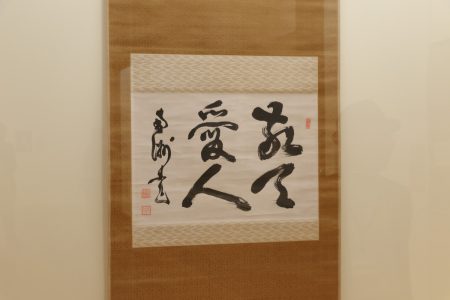
The motto of Saigo's motto. "Honoring the heaven" Tsuruoka City Designated Cultural Property "Book" Keisen Mistress "" Saigo Takamori Brush Written by Meiji 8 (1875) January Paper Book Statement One Personal Collection Showing Period: 5/26 – 6/17
· Epilogue People's Saigo
In the final chapter, the construction plan of the illusionary Saigo Takamori bronze statue whose construction was canceled due to sudden death of the organizer and photos showing the process of making Ueno Takamori Saigo statue are displayed. Through the exhibits, you can see how Saigo Takamori was loved by people.
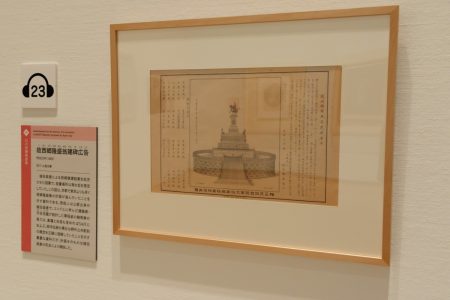
Imaginary Saigo prosperous statue "late Saigo Takamori Wagon monument ad" Meiji 22 (1889) Ishikawa one point Ishikawa · Yamanobaki bunko collection
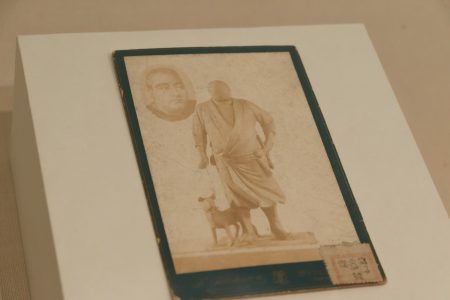
"Saigo Takamori mischievous planning department" Takigawa Keikumo photograph Meiji era Paper-baked picture 1 piece Tokyo National University of the Arts Exhibition period: 5 / 26-6 / 17
In the photo session held at the exhibition, Eita, who plays Toshimichi Okubo at "Saigo Dori" appeared. Eitora who saw the venue said that he was interested in the pocket watch owned by Okubo who likes small items. Eita himself seems to have a pocket watch himself, he said, "It may be similar."
All the materials exhibited at this exhibition are in good condition and are very surprised. I admire the efforts of people involved in data preservation and at the same time realize that the end of the Tokugawa period is an event 150 years ago. Why do not you come and visit the end of Tokugawa and Takamori Saigo?
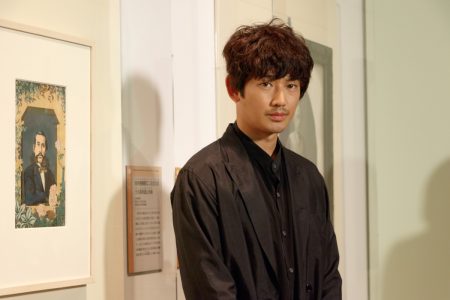
Eita who appeared in the photo session
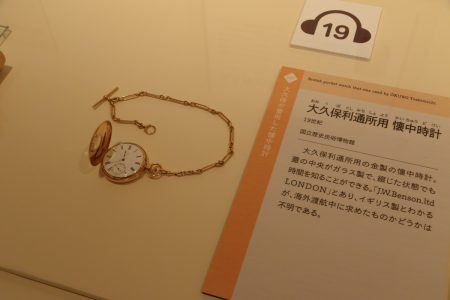
"Okubo Toshiu pole watch pocket watch" 19th century golden one point collection of National Historic Folk Museum
Summary
| Exhibition name | NHK Taiga Drama Special Exhibition "Saigo Don" |
| Society | May 26, 2018 – Saturday, July 16 (Monday, congratulation) 10 am – 5 pm (Admission is until 4:30 pm) |
| closing day | Monday (Open on July 16 (Mondays · congratulation)) |
| Venue | Tokyo University of the Arts University Art Museum Main Building Exhibition rooms 1, 2, 3, 4 |
| Admission fee | General 1,500 yen (1,200 yen) High school / university students 1000 yen (700 yen) (Free for junior high school students and below) ※ () is a group rate of 20 or more ※ 1 group leader per 20 group visitors is free ※ Persons who have a handicapped Person (Including 1 Caregiver) are free |


